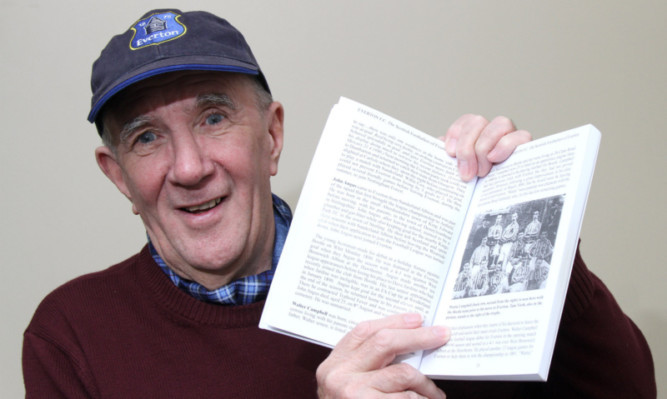Months of research by a lifelong Everton FC supporter has uncovered that the club’s first league scorer hailed from Arbroath.
Tony Onslow, 72, has written several books about Everton including one that focuses on the club’s Scottish players through the ages but he omitted Arbroath bank clerk George Fleming.
Mr Fleming was a member of Everton’s Liverpool and District Cup winning team in 1887, but information about his background was hard to find because it was such a common name in the city.
Mr Onslow made a breakthrough last year when he found an old Belfast Telegraph article showing the striker’s full name was George Spink Fleming; from this, Tony traced him to Arbroath.
“I’m annoyed with myself because I missed him out of the book. I thought I’d found every Scottish person who played for Everton over the years,” he said.
“I want the people of Arbroath to get credit for this. In Liverpool we’ve got the best library outside of London and once I had his middle name it could only be one man. From there, it was just a question of putting the hours in at the library.”
Fleming was born in November 1859 and went on to play for Arbroath. In the summer of 1885 Fleming left Arbroath to take a job at the Bank of Liverpool, where he would spend the rest of his working life. He also joined Everton Football Club.
The club’s opening league match, against Accrington, took place at Anfield originally used by Everton, not Liverpool and attracted the largest crowd of the day, more than 12,000 people.
“The game had been in progress for about an hour when George Farmer crossed the ball to Fleming who headed himself in to the record books by becoming the man to score the first goal for Everton Football Club in a Football League match,” Mr Onslow said.
Fleming married Margaret Crawford in 1900 and they had two sons, David and Noel. He died, aged 52, in 1912 and is buried at Anfield Cemetery in Liverpool.
Mr Onslow is keen for any of Fleming’s family members still in the Arbroath area to get in touch with The Courier, as he continues his research into this piece of Everton history.
